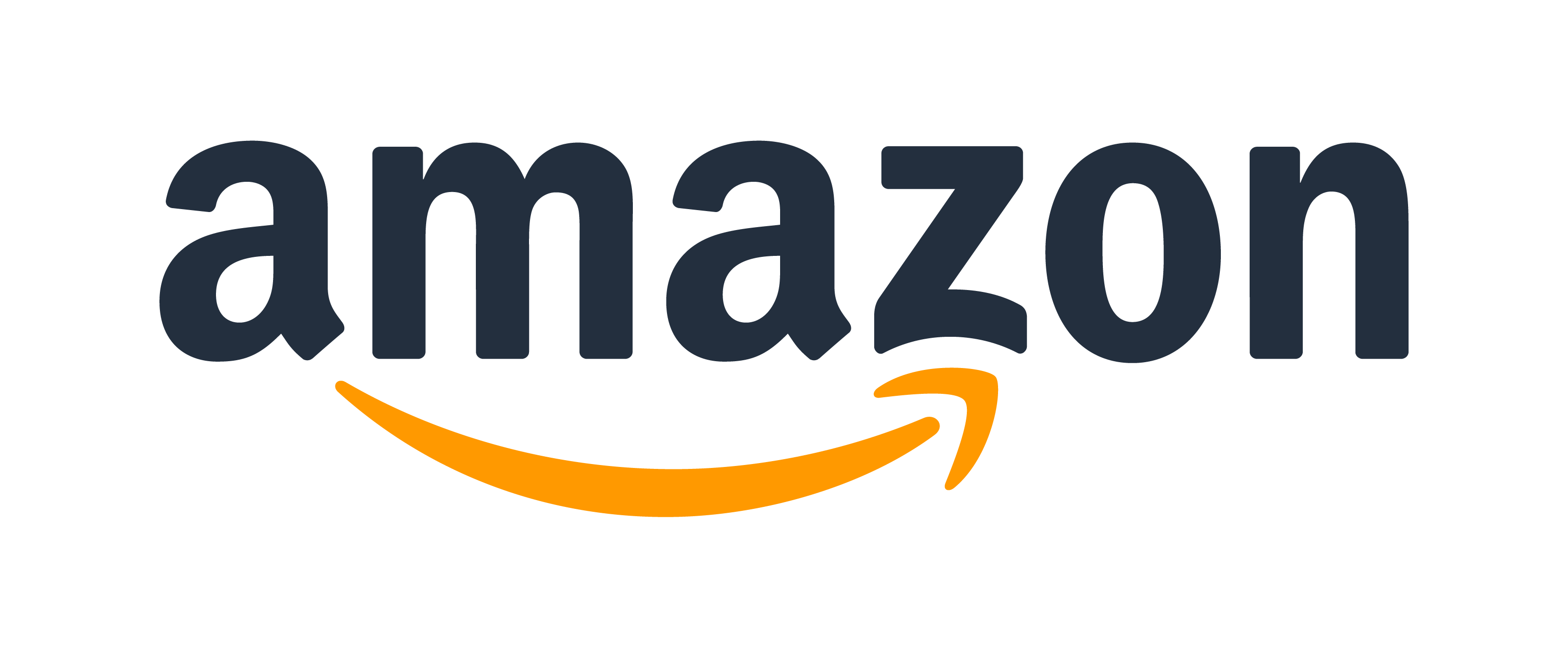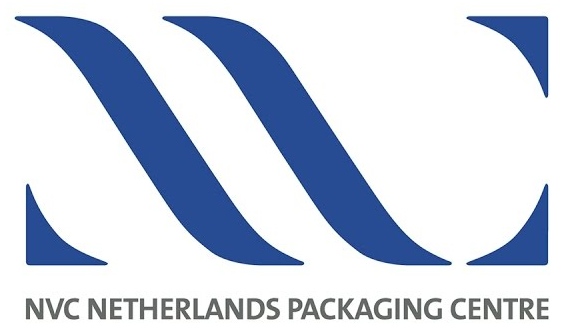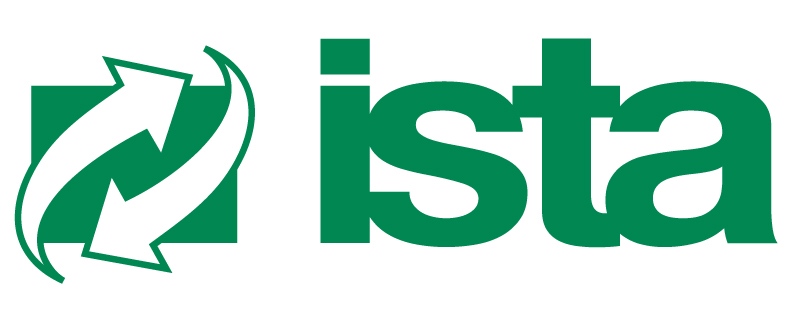
The following speakers presented at the 2019 ISTA European Packaging Symposium held on 5-7 March 2019 in Amsterdam, Netherlands.

Pushing the Boxelope: An Amazon Case Study

 Katie Exum
Katie ExumPackaging Engineer, Device Packaging
Amazon/Lab126
 Gary Dong
Gary DongSenior Packaging Engineer
Amazon/Lab126
The common challenge: “Design a package that reduces cost, increases operational efficiency, improves customer experience, and minimizes environmental impact… and is robust enough to protect the product from any damage… and delights the customer with a thoughtful, intuitive, low-cost design.”
This presentation will follow the design process for the latest Kindle Paperwhite e-reader that includes global consumer testing, fulfillment center reviews, retailer feedback, rounds of transit testing (field and lab), a dive into sustainability and ventures into automation optimization with packaging suppliers and device manufacturers. The end result is a design that pushes the boundaries of device packaging and meets the challenge by delighting customers with an innovative lean structure, 30% cost reduction, 72% more units per pallet, and a reduction of paper equal to six thousand trees per million devices. What was once a “moonshot” has become our newest reality and most optimized packaging structure to date.
Katie Exum Biography: Katie Exum discovered her passion for packaging while attending California Polytechnic State University, San Luis Obispo, where she graduated with a degree in Industrial Technology. She started her career at The Wonderful Company, working on their brands POM Wonderful, Halos, and Fiji Water. She currently works for Lab126, Amazon’s hub for consumer electronics devices. In her Packaging Engineering role, she works on accessories, smart home accessories, and new product initiatives. Katie is also passionate about sustainability and leads the Lab126 chapter of Amazon Sustainability Ambassadors.
Gary Dong Biography: Gary Dong is a Senior Packaging Engineer for Amazon at Lab126, the inventive research and development team for consumer electronic devices. Gary started his Packaging career in the Corrugate industry, then Pharmaceutical & Medical devices, and now focuses on Consumer Electronics. Gary’s job is to make bold decisions and advocate for the customer when engineering solutions. He received his Bachelor of Science in Industrial Technology – Packaging from San Jose State University and is a certified ISTA CPLP.
Effect of Digitalization on the Distribution of Palletized Unit Load

 Gerrit Hasselmann
Gerrit HasselmannProject-Manager Laboratory Packaging Test & Research
Fraunhofer Institute Material Flow and Logistics
Today it is already state-of the art to track the distribution of packaging / parcels between B2C and B2B consumers. But what about the tracking of palletized unit loads? Especially when they are distributed by small trucks in the area. The presentation will show up new initial stages.
Biography: Education: Studies in Production Technology and Material Flow Technologies at the University of Dortmund Activities: German Standard Institute DIN (CEN, ISO), VDA (Association German Automobile), VDI (German Engineer Association) Guideline VDI 2700, BDVI, BGL.
 Marga Bardeci
Marga Bardeci3DP Applications & Business Development Manager
HP, Inc.
Global trends and specific trends in the packaging and logistics are sustainability, customization, speed, short runs, JIT, digital inventory, on-demand production are inherent qualities to Additive Manufacturing. Additive Manufacturing has been proven to be an essential technology along the product life cycle in the manufacturing from the concept, all through the final part, to the spare parts. Furthermore, 3d printing contributes to optimize the entire supply chain value from machinery manufacturers, raw material manufacturers to packaging manufacturers. This presentation will show an outlook on the Additive Manufacturing, current applications with specific contributions in the packaging and on how Additive Manufacturing will transform the Manufacturing, logistics and transport in the future. Welcome to the digital manufacturing, where goods will be printed when they are needed, the exact way they are needed and where they are needed.
Biography: Education: Master in Digital Marketing and e-commerce La Salle, Universitat Ramon LLull, Barcelona; MBA - Master in International Business Administration; Universitat Politècnica de Catalunya, Barcelona; BA Translation and Interpreting (English, German & French). Passionate for the 3d Printing and pushing the adoption of 3d Printing in the manufacturing, educating and evangelizing companies to transform the industry.
 Stefan Wenner
Stefan WennerPackaging Logistics
HP Deutschland GmbH
The Trans Eurasia Railroad is the modern Silk-Road connecting the Chinese production with the European market. For shipping temperature-sensitive Computer products throughout the cold winter HP has qualified special rail-containers, protected by a mix of insulation and Phase Change Material. The presentation is an overview about the container type, the qualification and the experience with actual usage.
Biography: Education: Diploma in Mechanical Engineering /Material Flow Systems and a Master of Science in Industrial Engineering. Achievements: Packaging related patents and currently looks into establishing new container sizes, develop new packaging materials and challenging many individual packaging and palletizing solutions.
Shipping Damage Data Analytics using AI (Artificial Intelligence)

like "Watson Analytics"
 Sharon Spaulding
Sharon SpauldingPackaging Engineer
IBM
This presentation would show how using new AI tools like "Watson Analytics " can glean Shipping Damage trends and other focus areas for Packaging and Supply Chain improvements given structured shipping data. This process can be very time consuming and daunting if done manually. These new tools can create informative insights much easier and faster by "asking questions" and then creating logical visualizations with little effort.
Takeaways: Learn easier and faster ways to analyze structured data. These new intelligent tools allow for the user to realize trends in areas possibly not looked at before given the ability and ease to compare parameters. This can cut the time in half it normally takes to analyze data with traditional means.
Biography: Education: BS Clarkson University - Mechanical Engineering, MS Rensselaer Polytechnic Institute - Engineering Science Activities: Member of ISTA, Member of SWE (Society of Women Engineers), Member of RPA (Reusable Packaging Association), IBM Poughkeepsie Site Coordinator for DiscoverE Achievements: 2016 IOPP Ameristar Award, Electronic Division; 2009 Design News "Golden Mousetrap" Award, Hardware Division; and was Featured in a article in RPA's Packaging Revolution Magazine (March 2014) - "Reusable Packaging Fills Tall Order for Shipping IBM Mainframes"
Packaging with a Democratic Design

 Allan Dickner
Allan DicknerAct. Manager Packaging Development
IKEA of Sweden AB
The Consumers of today expect a lot from the packaging industry and this is even more clear for a brand owner like IKEA. The Consumers, including you and me, would like to act responsible in the way we are constructing the packaging solutions. We call this Democratic Design, and, in the presentation, I will elaborate on what it does mean.
 Tony O'Donovan
Tony O'DonovanLogistics Engineer
Intel Corporation
Express Shipping Mode is featured as fast delivery time and is now more widely used due to the emerging global e-commence. Trends show that packages will go through multiple stations/hubs during International Express Shipping. Due to large processing daily volumes, more and more indoor machinery like high speed auto-sorting conveyor, indoor transit vehicles, carts and loading devices are used to improve the efficiency in these stations/hubs.
In recent studies, we found that the vibration duration caused by the indoor machinery are around 30%~40% of the total shipment vibration. Years ago, the vibration mainly happened on transportation vehicles/aircraft. Therefore, the indoor environment changes and the impacts on the packaging is catching our attention.
- Analysis on the indoor dynamic environment (drop height and vibration PSD)
- Explanations for parcel boxes damage
- The effect of different size boxes
Biography: Tony is a Logistics Engineer focusing on Supply Chain and Warehousing projects and improvements globally. Education: APICS CSCP, Bsc Technology from The Open University (UK) & Electronics from Cork Institute of Technology (Ireland). Tony has previously worked in manufacturing and service engineering in the semiconductor industry.
 Eric Hiser
Eric HiserVice President of Technical
ISTA
Fierce competition for customer loyalty continues to drive rapid change in how product is delivered to consumers. As a result, the performance demanded of packaging continues to evolve. Gain perspective on how ISTA is working with industry to address this challenge including:
- Performance Testing for Ecommerce Including ISTA 6-Amazon
- Online Test Planning Platform
- Research Initiatives
Biography: Eric Hiser is Vice President of Technical Operations at International Safe Transit Association (ISTA). He manages the ISTA Technical Division including all technical activities, development and maintenance of ISTA Procedures and Projects, and ISTA Certification programs for labs, packaged-products and people.Eric is a graduate of the Michigan State University School of Packaging with a Bachelor of Science Degree in Packaging. He is an IoPP Certified Packaging Professional (CPP) and has an extensive background in transport packaging performance testing as well as developing packaging for the Consumer Packaged Goods (CPG) market.He stays involved in the packaging community through participation on industry groups such as IoPP transport packaging and medical device committees as well as serves on the industrial advisory board for Packaging Science at RIT.
How to Monitor Critical Parameters in the Distribution of 
Fresh Products for Quality Assurance of Transported Goods

Fresh Products for Quality Assurance of Transported Goods
 José Ignacio Garrigós
José Ignacio GarrigósProject Manager in the Packaging Optimization and Transport Simulation Area of ITENE
ITENE
The distribution and transport of temperature-dependent products presents significant inefficiencies and unknowns. The distribution of temperatures within T2 containers is unpredictable and variable during the journey. Factors such as the pre-conditioning temperature of each product, the heat exchange between products, the loading process, the quality, power and orientation of the refrigeration group, the position of the product inside the container, the outdoor ambient temperature, the chemical dynamics of food maturation or even the effect of the packaging itself (i.e. presence of shrink film isolates cold air flows) make the real control of temperature conditions very complex, and it is common that some products are not within the desired temperature parameters.
Takeaway: This presentation will approach a methodology of temperature sensing contrasted in several practical cases, and based on multiple pallets, levels and measuring points per product in order to analyze the overall quality of transport and the real effect on the products.
Stability of Transported Goods: Detection and Simulation of

Long Horizontal Accelerations Phenomena
 Victor Huart
Victor HuartResearch and Development Manager
METROPACK
The transportation of goods includes a set of mechanical constraints having a direct impact on the of the goods safety. With the development of the e-commerce, it is today possible to order every types of products of every geometries, masses and natures on the Internet (bulb, food, piece of furniture etc.).
In Europe, it becomes important to know the stability of the goods during the transport. Usually, the studies and the simulations of transport base themselves on the phenomena of the most spread in a logistic circuit (shock, shakes, vibrations). These phenomena are mainly short or fast and covered well by ISTA procedures.
However, there is much longer phenomena of acceleration which can have a direct impact on the stability of the product: the horizontal phenomena of long duration.
These phenomena are very present during the passages in traffic circles, during the important bends, the stakes alongside the quay as well as during long downs of brake or long accelerations.
These events are going to generate accelerations of weak amplitudes but applied to very long durations. The position of the center of gravity as well as the characteristics of the filming are thus going to play a role particularly mattering on this stability.
Takeaways:
- main locations of long acceleration phenomena
- main damage related to these phenomena
- means of testing long horizontal accelerations
Biography: Victor Huart is a Research and Development Manager at METROPACK in Reims, France. He holds a Packaging Engineering degree of the ESIReims (ESIEC) and a Ph.D on safety and industrial risk of transport. Victor is specialized in the mechanical stress studies and the packaging mechanical behavior during transport. Integrated in 2013 at METROPACK, a laboratory of test and transport simulation on packaging, he investigates the mechanical behavior of packaging and the fatigue phenomena. At METROPACK, his main aim is to develop methods of transport analysis, establish audits of the customers’ supply-chains and their packaging.
Web Retail Packaging: Quo Vadis?

 Michael Nieuwesteeg
Michael NieuwesteegManaging Director
NVC Netherlands Packaging Centre
Zezia Zlaouia
Research Assistant and E-Course Technical Education Assistant ETEA
NVC Netherlands Packaging Centre
Web Retail Packaging (WRP) is the packaging of products that are ordered and delivered on-line, directly at the consumer's home or via a collection point. WRP is an essential factor for the further stable growth of e-commerce, especially where physical products are concerned. What does the future of WRP look like and which packaging aspects constitute risks or opportunities? These questions are central to the NVC innovation project Web Retail Packaging, where retailers, FMCG manufacturers and packaging suppliers work together for the benefit of industry and society. This presentation will start with the NVC Position Paper “Packaging as driver for the sustained future of e-commerce” that was published 2 October 2014. This provides guidance to all actors involved (retailers, manufacturers, suppliers of packaging and related fulfilment services, etc.) on how and where to develop packaging for the sustained future of global e-commerce.
A key spin-off has been the NVC Live Online Learning E-Course Packaging for E-commerce that is successfully addressing the needs of business in learning effectively, without the need to travel for the business students. The course is accessible worldwide and features live tutors and full interaction in a well-balanced curriculum of four different 3-hour online training sessions.
Results will be shared on two surveys that have been conducted in the period 2017-2018 and yielded revealing insights in key elements of the Web Retail Packaging space. The NVC E-Commerce Home Delivery Packaging Survey 2017 analysed the delivery and unboxing of a range of products ordered at three different major online retailers.
The Web Retail Packaging Sustainability Insights Survey 2018 yielded initial results on the perspective of four major retailers regarding their packaging and sustainability as expressed in the factors People, Planet and Profit.
Michael Nieuwesteeg Biography: Managing Director of NVC Netherlands Packaging Centre since 1997. NVC (founded in 1953) is the association of 500+ companies (retailers, packaged goods manufacturers, packaging and machinery suppliers, service providers, recyclers, etc.) addressing the activity of packaging throughout the supply chain of packaged products. The NVC membership, joint innovation projects, information services and education programme stimulate the continuous improvement of packaging. Michael is board member of the World Packaging Organisation (WPO), secretary of the European Packaging Institutes Consortium (EPIC) and chairman of the NEN Policy Committee on the Standardisation of Transport, Logistics and Packaging.
Zezia Zlaouia Biography: is a student at the Amsterdam Applied University, Faculty Technology and Logistics (Hogeschool van Amsterdam, Faculteit Techniek en Logistiek). She is research assistant at the NVC innovation project Web Retail Packaging and E-Course Technical Education Assistant ETEA for i.a. the NVC Live Online Learning E-Course Packaging for E-commerce.
Cosmetic Products Business Case Across Testing Unit Load Stability
.png)
 Enrique de la Cruz
Enrique de la CruzR&D Manager
Safe Load Testing Technologies
Berioska is a cosmetic products company, which wants to increase its business area sending its products more far than today, so they need a testing procedure which helps them to validate its packaging system to survive the potential hazards.
Berioska’s Quality Policy concentrates on four areas: QUALITY, OCCUPATIONAL HEALTH & SAFETY, the ENVIRONMENT and PRODUCT SAFETY. The unit load should be in accordance with the Quality Policy. It will try to reduce the environmental impact and costs optimizing its packaging system without reducing the safety on transport with a new packaging system. That is why they want its own procedure for validating all its packaging. It should be able to validate current packaging, prototypes and future developments.
After monitoring real transport and measuring the strength loose of the sample after transportation, the aim is to design a simulation procedure which can reproduce closer as much is possible the strength loose using laboratory simulation. In order to know which procedures could be closer to the strength loose and damages produced during transport, several samples of the unit load are tested in similar testing methods and the results will be compared with the transported sample result. The evaluated testing procedures includes different vibrations, shocks, and statics and dynamics mechanical stresses. Once the Testing procedure is designed it will be applied to the packaging prototypes to define the one Berioska will use for increasing its market.
Takeaways: An example of how to proceed to verify the stability of a unit load for a successful introduction in a new market.
Biography: Enrique de la Cruz is the R&D Manager of Safe Load Testing Technologies. He has more than 11 years of experience in research and development and transport simulation for packaging. His research efforts and knowledge have allowed him to be part of a team of experts who patented two machines of great importance for the packaging and transport sector. Furthermore, he has published several research articles in scientific journals and has participated in the most important events of the sector. Enrique holds an Electronics Systems Engineering MSi by the Universidad Politécnica de Valencia (UPV) and is Physic by the Universidad of Valencia and holds a Master’s Degree.
Packaging Automation and Fulfilment Excellence in the E-commerce Sector

 Lester Barrat
Lester BarratExecutive Director, EMEA
Sealed Air
Lester Barratt FCILT, Sealed Air's Executive Director EMEA explores the challenges of the fast paced world of e-commerce. In focus, he explains the connection between new technologies in mechanisation and automation and how they interact with the packaging and logistics requirements to fulfil the needs of the consumer, also considering the complexities of the supply chain from the moment an order is processed to the last mile delivery and the impact on consumer experience.
Biography: Lester is a Chartered Member and Fellow of the Chartered Institute of Transport and Logistics ( CILT ) with a background in Engineering and Design. Lester is responsible for Automation, Strategic business and Operational Excellence at Sealed Air in the EMEA region.
Future-proof eCommerce Packaging

 Gérard van den Boogaard
Gérard van den BoogaardExpertise Manager Supply Chain
Smurfit Kappa Development Centre
Where and how do packaging and eCommerce meet, in order to fulfil the needs of this ever changing and fast-growing business?
eCommerce has its own unique set of demands from a packaging perspective: different primary products and number of products combined in one package leading to a wide range of pack sizes or excessive void fill. Protection of the product in the eCommerce environment. Unpacking experience to be in line with the consumer expectations, packages with return options, packaging recycling within consumers possibilities. These demands on eCommerce packages are often quite opposite to the packaging requirements of the traditional supply chain where we have a defined number of case counts, 1 type of primary product, optimized logistics for a well-defined supply chains. Unpacking the goods in store, presentation of the product on shelf and clear B2B recycling streams for package material.
Given the fundamentals of today's tools and methods to design fit-for-purpose packaging for the traditional market these tools are not suitable for eCommerce packaging. Focusing on the eCommerce supply chain we analyzed: primary products, pack designs, packing process, supply chains and consumers interacting for these packages. Combining all insights with experimental research and physical modelling requirements we have developed an approach to design future-proof packaging for eCommerce sales channels.
From all challenges that lay ahead for eCommerce packaging solutions this story is focused on developing the packaging portfolio. Based on increasing sales volumes, including peaks and volatility, we will give insights on the choices to make for this. The effect of the number of package SKU's and their sizes. And how to find the balance between; the number of pack sizes, which pack sizes, used package material, void fill, shipping volume and process complexity.
Biography: Applied Biology; HAS university, Plant Breeding; Wageningen University & Research. Activities: 20 years in Fresh Food & Chains; Wageningen University & Research, 10 years at Smurfit Kappa Development Centre; packaging in supply chains.
Analyzing Field Environments to Understand Product Failure

 Aaron Offringa
Aaron OffringaInternational Sales Manager
Vibration Research
Product failures often require expensive repairs or replacements. Over-engineering adds to recurring costs and its success is uncertain if the failure's cause is not understood. Engineers need in-depth knowledge before attempting a re-design. This case study focuses on bus seat failures not predicted by industry standard tests. The goal was to collect comprehensive field vibration data and analyze that data to understand the failure's cause. The study used accelerometers placed at various points in multiple seating configurations and across multiple field environments. Analysis identified transmissibility issues between axes of motion, as well as higher reliability seat configurations.
Takeaway: This presentation shows how multiple analysis techniques were used with real sets of field collected vibration data to understand the causes of a recurring product failure.


